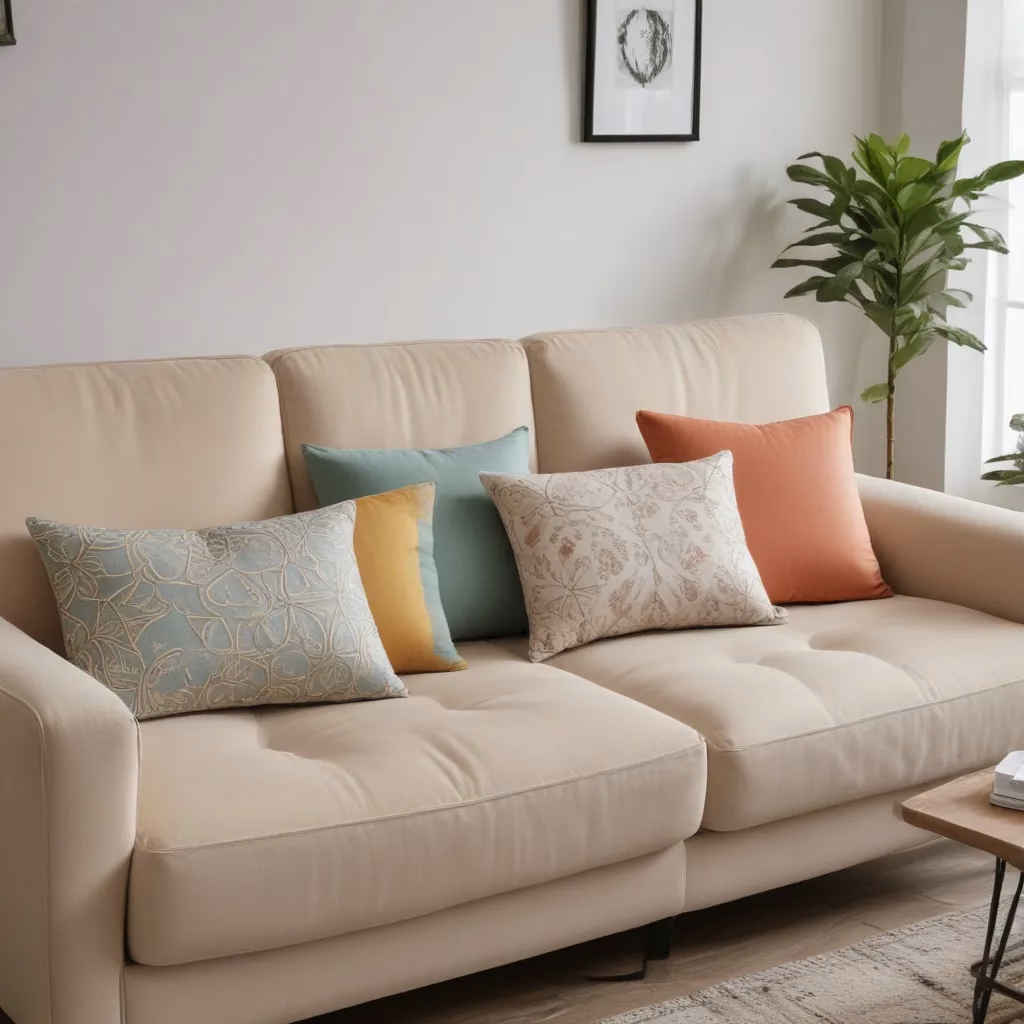
The Timeless Appeal of Chinoiserie in Modern Interiors
As a furniture specialist with years of experience, I’ve seen countless design trends come and go. However, one style that continues to captivate homeowners and interior designers alike is Chinoiserie. This exquisite fusion of Eastern and Western aesthetics has stood the test of time, evolving to fit contemporary tastes while maintaining its classic charm.
Chinoiserie, with its intricate patterns and rich cultural influences, offers a unique way to infuse character into any space. I’ve personally witnessed how this style can transform a room from ordinary to extraordinary. The beauty of Chinoiserie lies in its versatility – it can be bold and dramatic or subtle and sophisticated, depending on how it’s incorporated into your decor.
In recent years, I’ve noticed a renewed interest in Chinoiserie, particularly among younger homeowners. They’re drawn to its timeless elegance and the way it adds depth and interest to modern interiors. This resurgence has led to fresh interpretations of the style, blending traditional elements with contemporary design sensibilities.
Incorporating Chinoiserie into Your Sofa Selection
When it comes to selecting a sofa that embodies Chinoiserie chic, there are several factors to consider. The key is to find a piece that balances the ornate nature of Chinoiserie with the comfort and functionality required of a sofa.
In my experience, upholstery plays a crucial role in achieving this balance. Opt for fabrics with Chinoiserie-inspired patterns – think intricate florals, pagodas, or exotic birds. These designs can be subtle or bold, depending on your preference. I often recommend starting with a neutral base and incorporating Chinoiserie elements through throw pillows or a statement chair if you’re hesitant about committing to a fully patterned sofa.
For those ready to make a bolder statement, consider a sofa with a Chinoiserie print. I’ve seen stunning examples where the entire piece becomes a work of art, serving as the focal point of the room. When choosing such a statement piece, remember to keep the rest of your decor relatively subdued to avoid overwhelming the space.
The Art of Mixing Patterns in Chinoiserie Design
One of the most exciting aspects of working with Chinoiserie is the opportunity to play with patterns. Unlike some design styles that shy away from mixing prints, Chinoiserie embraces this practice. However, it’s an art that requires a careful eye and a bit of practice.
I always advise my clients to start with a primary pattern – usually the largest and most prominent in the room. This could be your sofa upholstery or a set of curtains. From there, introduce complementary patterns in varying scales. For example, if your sofa features a large-scale floral print, pair it with smaller geometric patterns in throw pillows or a nearby armchair.
Color coordination is key when mixing patterns. Stick to a cohesive color palette to tie different patterns together. In Chinoiserie designs, blue and white is a classic combination, but don’t be afraid to explore other color schemes. I’ve seen stunning rooms that incorporate rich reds, vibrant greens, or soft pinks alongside traditional blue and white.
Chinoiserie Beyond the Sofa: Complementary Furniture and Accessories
While the sofa may be the centerpiece of your Chinoiserie-inspired living room, it’s important to consider how other furniture pieces and accessories can enhance the overall look. In my years of experience, I’ve found that the right combination of elements can truly bring a Chinoiserie theme to life.
Cabinets and sideboards with lacquered finishes are quintessential Chinoiserie pieces. These add a touch of glamour and provide practical storage solutions. I often recommend pairing a sleek, modern sofa with an ornate Chinoiserie cabinet to create an interesting juxtaposition.
Accessories play a crucial role in Chinoiserie decor. Blue and white porcelain vases, ginger jars, and decorative plates are classic choices. I’ve helped many clients curate collections of these pieces, arranging them in asymmetrical groupings for a more dynamic display.
Lighting is another area where you can incorporate Chinoiserie elements. Ceramic table lamps with Chinoiserie motifs or pagoda-style pendant lights can add both functionality and style to your space. I particularly love how these lighting choices can cast interesting shadows, adding depth and intrigue to a room.
The Role of Color in Chinoiserie Chic
Color plays a pivotal role in Chinoiserie design, and understanding how to use it effectively can make or break your interior. While blue and white are the most recognizable colors associated with Chinoiserie, the palette extends far beyond this classic combination.
In my experience, successful Chinoiserie interiors often start with a neutral base. Soft whites, creams, or pale greys provide a perfect backdrop for the more vibrant elements of the design. These neutral tones allow the intricate patterns and bold colors of Chinoiserie to shine without overwhelming the space.
When it comes to introducing color, I always encourage my clients to be bold. Rich jewel tones like emerald green, sapphire blue, and ruby red are hallmarks of Chinoiserie design. These colors can be incorporated through upholstery, wall coverings, or accessories. I’ve seen stunning rooms where a single wall painted in a deep, saturated color becomes the perfect backdrop for Chinoiserie-inspired furniture and decor.
Balancing Traditional and Modern Elements
One of the most exciting challenges in creating a Chinoiserie-inspired space is striking the right balance between traditional and modern elements. This fusion is what keeps Chinoiserie fresh and relevant in contemporary interiors.
I often advise clients to start with a modern foundation – clean-lined furniture and a neutral color palette. Then, we layer in Chinoiserie elements through accessories, textiles, and statement pieces. For example, a sleek, contemporary sofa can be transformed with Chinoiserie-print throw pillows and a lacquered side table.
Alternatively, you can take a more traditional Chinoiserie piece, like an antique cabinet, and pair it with modern art or lighting fixtures. This juxtaposition creates a dynamic and interesting space that feels both timeless and current.
Chinoiserie in Different Room Settings
While Chinoiserie is often associated with living rooms and bedrooms, I’ve had great success incorporating this style into various spaces throughout the home. Each room presents unique opportunities to showcase Chinoiserie elements.
In dining rooms, Chinoiserie can create a dramatic and elegant atmosphere. I love using Chinoiserie wallpaper as a backdrop for a modern dining table and chairs. The contrast between the ornate patterns and sleek furniture creates a captivating dining experience.
For bedrooms, Chinoiserie offers a sense of luxury and tranquility. A Chinoiserie-inspired headboard can serve as a stunning focal point, complemented by crisp white linens and subtle accents in the same color family.
Even in bathrooms, Chinoiserie can make a statement. I’ve designed powder rooms with bold Chinoiserie wallpaper that never fail to impress guests. Paired with a simple, modern vanity, the effect is both dramatic and sophisticated.
Maintaining and Caring for Chinoiserie Furniture
As with any fine furniture, proper care and maintenance are essential for preserving the beauty of Chinoiserie pieces. Over the years, I’ve gathered some valuable tips for keeping these items in top condition.
For lacquered surfaces, gentle cleaning is key. I recommend using a soft, dry cloth for regular dusting. For deeper cleaning, a slightly damp cloth can be used, but it’s crucial to avoid harsh chemicals that can damage the finish. Always test any cleaning product on a small, inconspicuous area first.
Upholstered Chinoiserie pieces require special attention. Vacuum regularly using a soft brush attachment to prevent dust and dirt from settling into the fabric. For spills, blot immediately with a clean, dry cloth. Avoid rubbing, as this can push the stain deeper into the fibers.
If your Chinoiserie piece includes hand-painted elements, extra care is needed. These delicate surfaces should only be cleaned by professionals to prevent damage to the artwork.
The Future of Chinoiserie in Interior Design
As we look to the future, I’m excited about the continued evolution of Chinoiserie in interior design. This enduring style has proven its ability to adapt to changing tastes while maintaining its core essence.
I anticipate seeing more contemporary interpretations of Chinoiserie patterns and motifs. Designers are already experimenting with scale, color, and abstraction to create fresh takes on classic Chinoiserie elements. These modern versions appeal to a new generation of homeowners who appreciate the style’s rich history but desire a more current aesthetic.
Sustainability is another trend that’s influencing Chinoiserie design. There’s a growing interest in eco-friendly materials and production methods. I’m seeing more Chinoiserie-inspired pieces made from reclaimed wood or sustainable fabrics, which adds an interesting layer to the style’s story.
Technology is also playing a role in the future of Chinoiserie. Digital printing techniques are allowing for more intricate and customizable patterns, opening up new possibilities for personalized Chinoiserie designs.
Chinoiserie for Different Design Styles
One of the most fascinating aspects of Chinoiserie is its ability to complement various design styles. Throughout my career, I’ve incorporated Chinoiserie elements into a wide range of interiors, from traditional to ultra-modern.
For those with a traditional aesthetic, Chinoiserie fits in seamlessly. Its rich history and classic motifs blend beautifully with antique furniture and formal room layouts. In these settings, I often use Chinoiserie as a way to add depth and interest to an already elegant space.
In modern interiors, Chinoiserie can provide a striking contrast. I love pairing sleek, minimalist furniture with a bold Chinoiserie wallpaper or a statement cabinet. This juxtaposition creates a dynamic and visually interesting room that feels both fresh and timeless.
For eclectic spaces, Chinoiserie acts as a unifying element. Its diverse patterns and motifs can tie together disparate pieces, creating a cohesive look. I’ve successfully used Chinoiserie to bridge the gap between vintage finds and contemporary pieces in many eclectic interiors.
Chinoiserie on a Budget
While Chinoiserie is often associated with luxury, it’s entirely possible to incorporate this style into your home without breaking the bank. Over the years, I’ve developed several strategies for achieving a Chinoiserie look on a budget.
One of my favorite tips is to focus on accessories. A few well-chosen Chinoiserie-inspired pieces can have a big impact on a room. Look for blue and white porcelain vases or ginger jars at thrift stores or flea markets. These can often be found at reasonable prices and instantly add a Chinoiserie touch to any space.
Another budget-friendly option is to use Chinoiserie-inspired fabrics for small upholstery projects. Covering throw pillows or reupholstering a small chair with a Chinoiserie print can transform the look of a room without the cost of larger furniture pieces.
For those handy with DIY projects, consider creating your own Chinoiserie-inspired art. I’ve guided clients through simple projects like painting bamboo motifs on plain ceramic vases or creating wall art using Chinoiserie-patterned paper.
Chinoiserie in Small Spaces
Working with Chinoiserie in small spaces presents unique challenges, but it’s also an opportunity to create truly impactful interiors. In my experience, the key is to use Chinoiserie elements strategically to maximize their effect without overwhelming the space.
In compact rooms, I often recommend using Chinoiserie as an accent rather than the dominant theme. For example, a single wall covered in Chinoiserie wallpaper can create a stunning focal point without making the room feel cluttered. This approach works particularly well in small entryways or powder rooms.
When it comes to furniture in small spaces, look for pieces that serve dual purposes. A Chinoiserie-inspired cabinet can provide both storage and a stylish accent. I’ve also had success using Chinoiserie screens as room dividers in studio apartments, adding both functionality and aesthetic appeal.
Mirrors are another great tool for small spaces, and Chinoiserie-style mirrors can add both light and decorative interest. A large mirror with a pagoda-inspired frame can make a room feel larger while also serving as a striking piece of art.
Conclusion: Embracing Chinoiserie in Your Home
As we’ve explored throughout this article, Chinoiserie offers a rich and versatile design language that can enhance any interior. Whether you’re drawn to its traditional roots or excited by its modern interpretations, there’s a way to incorporate Chinoiserie into your home that feels authentic and personal.
Remember, the beauty of Chinoiserie lies in its ability to tell a story. Each pattern, motif, and color choice contributes to a narrative that spans centuries and continents. As you introduce Chinoiserie elements into your space, consider the story you want to tell.
Don’t be afraid to experiment and make Chinoiserie your own. Mix patterns, play with color, and blend old with new. The most successful Chinoiserie interiors are those that reflect the personality and style of their inhabitants.
If you’re feeling inspired to explore Chinoiserie further, I encourage you to visit Sofa Spectacular for more ideas and inspiration. Their collection offers a range of options that can help you bring this timeless style into your home.
Ultimately, creating a Chinoiserie-inspired space is about more than following design rules. It’s about creating an environment that feels both luxurious and livable, exotic and familiar. With careful consideration and a bit of creativity, you can craft a space that captures the essence of Chinoiserie while reflecting your unique style.



